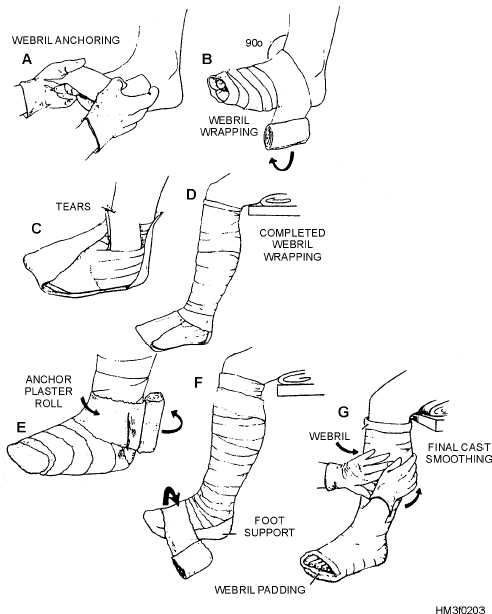wrinkles. Apply the plaster beginning at the toes (fig.
2–3E), using the same technique of tucks and folds and
smoothing as for the short arm cast. Before applying
the last layer, expose the toes and fold back the webril.
As the final step, apply a footplate to the plantar
surface of the cast, using a generous thickness of
plaster splints secured with one or two rolls of plaster
(fig. 2–3F). This area provides support to the cast and a
weight-bearing surface when used with a walking
boot.
Whenever a cast is applied, you must give the
patient written and verbal instruction for cast care and
circulation checks (i.e., numbness, cyanosis, tingling
of extremities).
Instruct the patient to return
immediately should any of these conditions occur.
When a leg cast is applied, the patient must also receive
instructions in the proper use of crutches. The cast will
take 24 to 48 hours to completely dry, and it must be
treated gently during this time.
Since plaster is
water-soluble, the cast must be protected with a
waterproof covering when bathing or during wet
weather. Nothing must be inserted down the cast (e.g.,
coat hangers) since this action can cause bunching of
the padding and result in pressure sores. If swelling
occurs, the cast may be split and wrapped with an
elastic wrap to alleviate pressure.
Cast Removal
A cast can be removed in two ways: by soaking in
warm vinegar-water solution until it dissolves, or by
2-22
Figure 2–3.—Applying a short leg cast.

